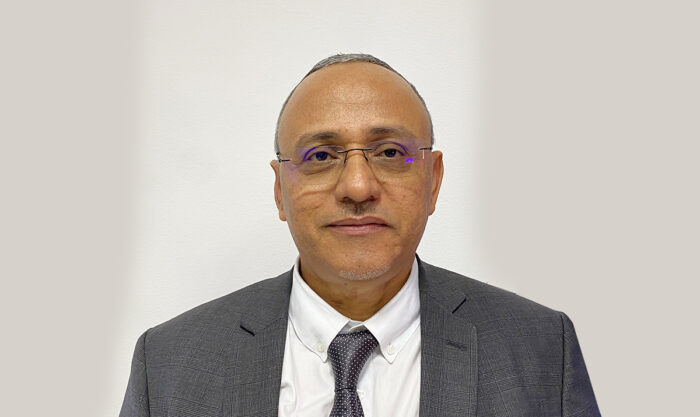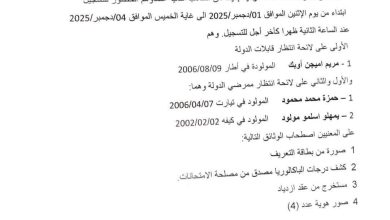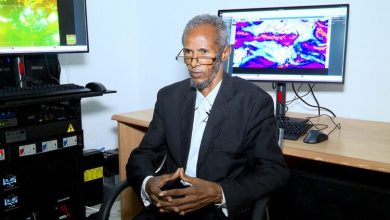مقابلة مع محمد فال محمد التلميدي، المدير العام والرئيس التنفيذي للشركة الوطنية للصناعة والتعدين موريتانيا

التركيز على الأعمال: تعد موريتانيا ثاني أكبر منتج لخام الحديد في أفريقيا، حيث تم تصدير 13.35 مليون طن من الخام في عام 2022. ويمثل قطاع التعدين 24% من الناتج المحلي الإجمالي للبلاد و60% من الصادرات في عام 2022. مع احتياطيات كبيرة مؤكدة من الحديد والذهب والنحاس لا يزال هناك الكثير من الاستكشاف الذي يتعين القيام به لفتح احتياطيات جديدة. في البداية، حدثينا عن دور ومساهمة قطاع التعدين في الاقتصاد الموريتاني؟ هل يمكنك أيضًا أن تقدم لنا أحدث الأرقام الرئيسية لتقييم أهمية هذا القطاع؟
محمد فال محمد التلميدي: قطاع التعدين يشكل ركيزة أساسية للاقتصاد الموريتاني، حيث تساهم الشركة الوطنية للصناعة والمعادن وحدها بنسبة 22% في ميزانية الدولة و32% من حجم الصادرات و9% من الناتج المحلي الإجمالي في عام 2022 وهذا يؤكد الأهمية القصوى لهذا القطاع.
على الرغم من 60 عامًا من العمل في قطاع خام الحديد، إلا أن باطن الأرض لدينا لا يزال غير مستكشف إلى حد كبير، ويحتوي على إمكانات تعدين هائلة ومتنوعة. وتقدر الاحتياطيات المؤكدة من خام الحديد، الذي كان محور التركيز الأساسي لمدة ستة عقود، بأكثر من 15 مليار طن، وتتكون في المقام الأول من خامات حديد مغناطيسية فقيرة ولكنها قابلة للتخصيب.
إلى جانب المعادن مثل الذهب والنحاس والجبس التي يتم استغلالها حاليًا من قبل مختلف الفاعلين، بما في ذلك الشركة العربية للصناعات المعدنية (SAMIA) – وهي شركة تابعة لشركة سنيم متخصصة في الجبس والجص – نكتشف أيضًا علامات واعدة لوجود معادن إضافية. تجري حملات الاستكشاف التي تجريها العديد من الشركات الوطنية والدولية للكشف عن النطاق الكامل لثرواتنا المعدنية.
ب.ف: ما هي الودائع الرئيسية الموجودة في موريتانيا، وما الذي يفعله مختلف اللاعبين في السوق فيما يتعلق بالاستكشاف والتنويع في الوقت الحالي؟ كيف تقيمون إمكانيات البلاد في مجال المناجم؟
محمد فال محمد التلميدي: تحتوي باطن الأرض الموريتانية، الغنية بالإمكانات غير المستغلة، على أكثر من ألف مؤشر محدد، تعرض فرصا كبيرة للتعدين. في الوقت الحاضر، تتركز أنشطة التعدين الأساسية في البلاد على خام الحديد، وعلى رأسهم شركة سنيم، والذهب تحت شركة كينروس تازياست، والنحاس من خلال مناجم النحاس الموريتانية. علاوة على ذلك، هناك مبادرات استكشاف مختلفة جارية تستهدف المعادن مثل الكروم والفوسفات والتيتانيوم واليورانيوم والأتربة النادرة وغيرها.
في سنيم، تركيزنا يمتد إلى ما هو أبعد من مجرد زيادة القدرات؛ نحن نعمل بنشاط على تنويع محفظة التعدين لدينا. وتتمثل إحدى الخطوات المحورية في هذا الاتجاه في إحياء تراخيص التنقيب عن النحاس والذهب والمعادن المرتبطة بها في ولاية إينشيري، الواقعة في الجزء الشمالي من البلاد. تتوافق هذه الخطوة الإستراتيجية مع التزامنا بتوسيع نطاق أنشطة التعدين لدينا.
ب.ف: كشفت شركة سنيم مؤخرا عن خطة استراتيجية جديدة تهدف إلى زيادة الإنتاج والتنويع في معادن وقطاعات جديدة. هل يمكنك أن تقدم لقرائنا لمحة عامة عن الشركة وأصولها الرئيسية ومهمتها الحالية والإنتاج والمعالجة الأولية والتوجيه والنقل، مع الأرقام الداعمة إن أمكن؟
محمد فال محمد التلميدي: تمثل شركة سنيم حجر الزاوية في التعدين في موريتانيا، حيث تشارك في عمليات شاملة تشمل البحث والاستغلال والمعالجة والنقل وتصدير خام الحديد. تساهم ودائع شركة سنيم، التي تقع في منطقة تيريس زمور، بشكل كبير في المشهد الاقتصادي للبلاد.
تشمل مسؤوليات شركة سنيم، التي تدير كامل نطاق العمليات، البحث الجيولوجي والتعدين والصيانة وإنتاج الماء والكهرباء ونقل خام الحديد وتشغيل ميناء التحميل في نواذيبو. وكدليل على التزامها بالتميز، حصلت سنيم على شهادة ISO 9001 منذ عام 2005، وISO 14001 منذ عام 2011، وعلامة “ملتزم بالمسؤولية الاجتماعية للشركات – المستوى المؤكد” في نظام تقييم الشهادات Afnor، المتوافق مع معيار ISO 26000 منذ عام 2021.
مع إرث غني يمتد إلى 60 عامًا في قطاع التعدين، تمكنت شركة سنيم من التغلب ببراعة على مختلف التحديات التشغيلية والسوقية. التحول الرائد، افتتحت شركة سنيم أول مصنع لتخصيب المغنتيت في عام 1984، مما يمثل تحولا نحو التحول الأولي. في الوقت الحاضر، ما يقرب من نصف إنتاج سنيم يأتي من مصانع إنتاج المركزات.
وسعيا لتحقيق أهداف طموحة، تهدف شركة سنيم إلى تصدير 14 مليون طن في عام 2023، بعد تحقيق مبيعات قياسية ناجحة بلغت 13.35 مليون طن في عام 2022. مشروع فديرك، الذي ينتج حوالي 2 مليون طن من الهيماتيت سنويا، ومشروع تيزرغاف، مع إن الإنتاج السنوي المخطط له بمقدار 6 ملايين طن من المركزات، يدل على التزام سنيم بتوسيع طاقتها على المدى القصير إلى المتوسط.
ومن أجل تعزيز الجهود التعاونية، دخلت شركة سنيم في شراكة مع جلينكور وسابك في مشاريع إثراء خام الحديد وتصنيع الكريات، بقدرة سنوية تبلغ 11.3 و10 مليون طن على التوالي. والبنية التحتية القوية، بما في ذلك السكك الحديدية والميناء، موجهة لدعم هذه الزيادة في الطاقة الإنتاجية.
من خلال استكشاف حلول الطاقة المبتكرة، تتعمق شركة سنيم في إمكانات التقنيات الناشئة مثل الغاز الأخضر أو الهيدروجين لتعزيز القيمة المضافة لخام الحديد. ويتجلى التحول الاستراتيجي نحو إنتاج الكريات والصلب الأخضر في مذكرات التفاهم الموقعة مع عملاقي الصناعة الإمارات للحديد وأرسيلور ميتال، مما يعكس استراتيجية التطوير التطلعية لشركة سنيم.
ب ف: جزء من الخطة الاستراتيجية للشركة هو التنويع والتوسع في المناطق المجاورة. ما هي أهم الخطوات التي تم اتخاذها مؤخرا، وما هي المشاريع الجديدة لشركة سنيم؟
Mohamed Vall Mohamed Telmidy: SNIM unfolds its forward-looking vision through a strategic business plan (PSE), comprising diverse facets like human resources, geological research, commercial strategies, and a dedicated focus on sustainable development.
An integral aspect of SNIM’s strategic evolution is mining diversification. In 2021, SNIM assumed control of a research permit for gold, copper, and associated metals in the Inchiri region, situated in northern Mauritania. Encouragingly, the outcomes of the 2022 research campaign within this permit underscore the potential for substantial developments in this domain. This initiative underscores SNIM’s commitment to embracing new mining horizons and contributing to the broadening landscape of Mauritania’s mineral resources.
BF: SNIM also contributes greatly to local development, notably by investing €14.4 million last year in social and community projects and by providing work to 157 local companies in 2022. How important is support for citizens and local businesses in the company’s current strategy?
Mohamed Vall Mohamed Telmidy: Since its inception, SNIM has consistently upheld a commitment to sustainability, economic profitability, and social responsibility. Beyond its pivotal role in the national economy as a leading employer, contributor to GDP, budget revenues, and exports, SNIM actively fosters local development in the regions it operates. This commitment materializes through substantial investments in social and community projects, creating a positive impact on the areas where it is present.
SNIM’s approach extends to collaborations with local businesses, fostering a thriving ecosystem. In 2022 alone, the value of orders placed with these local enterprises reached an impressive $55 million, showcasing the mutually beneficial relationships forged within the community.
Moreover, the SNIM Foundation, established in 2007, stands as a testament to SNIM’s dedication to social betterment. The foundation strategically engages in areas like education, health, water and energy access, and overall local development. Its impactful investments have significantly contributed to enhancing the quality of life along the railway corridor, particularly in Nouadhibou-Zouerate and Bir Mougrein, showcasing SNIM’s enduring commitment to holistic development.
BF: SNIM has a long history of partnering with foreign companies to expand its operations, including joint ventures with Swiss company Glencore and Saudi company SABIC. The company has also signed MOUs with various global players including Emirates Steel and ArcelorMittal. What are the company’s biggest current joint venture projects, what do these partnerships bring you in concrete terms, and what type of future partnerships is the company considering to broaden its scope of action?
Mohamed Vall Mohamed Telmidy: Analyzing the composition of our capital structure unveils SNIM as a highly inclusive company. Beyond the substantial 78.35% ownership by the Mauritanian state, we proudly incorporate contributions from foreign and private sector entities, fostering a diverse and collaborative environment.
In the realm of partnership initiatives, SNIM spearheads two major joint venture projects: Tekamul (SNIM-SABIC) and El Aouj (SNIM-Glencore). These ventures represent strategic collaborations where stakeholders synergize their resources, leveraging complementary expertise to maximize project success. El Aouj, currently progressing through the funds mobilization phase following the FEED stage, and Tekamul, presently advancing in the FEED phase post the completion of the feasibility study, exemplify SNIM’s commitment to dynamic and mutually beneficial partnerships.
Endowed with substantial resources and assets, SNIM stands poised to forge new alliances. Whether in the realms of iron ore extraction, beneficiation, transformation, or venturing into renewable energies and green steel production, SNIM possesses the capacity and willingness to embark on innovative partnerships that contribute to the sustainable development of the industry.
BF: SNIM’s new strategic plan also plans to enter the green hydrogen market to complement its forays into renewable energies. What progress has SNIM made in reducing emissions from its mining operations, notably with the use of solar and wind energy? How does SNIM intend to take advantage of the development of green hydrogen in Mauritania in the future – what new projects do you plan to develop using green hydrogen and how are you preparing for them?
Mohamed Vall Mohamed Telmidy: SNIM stands at the forefront of renewable energy production, pioneering Mauritania’s sustainable energy landscape by inaugurating the nation’s inaugural wind power plant in 2012, located in Nouadhibou. Our current energy portfolio boasts a wind power facility in Nouadhibou and a solar power plant in Zouerate, with ongoing installations for an additional solar power plant in Zouerate.
At SNIM, the imperative to decarbonize our operations takes precedence in our strategic blueprint. Deliberations are in progress to formulate a comprehensive decarbonization plan aligned with national commitments, strategically addressing greenhouse gas reduction targets.
Anticipating the transformative potential of emerging energy solutions, SNIM has embraced forward-thinking initiatives. The signing of memorandums of understanding (MOUs) for pellet and green steel production lays the groundwork for our future endeavors, positioning us to seamlessly transition into the production of green gas and hydrogen. This strategic foresight aligns with our commitment to fostering sustainable practices and leveraging innovative energy solutions.
BF: Education and training are a priority for the government. As the country’s second largest employer in Mauritania with around 7,000 employees, how are you working to further develop the level of skill and technicality of your workforce, with a view to your future projects?
Mohamed Vall Mohamed Telmidy: Human resource development is a pivotal focus within SNIM’s overarching strategy, with a dedicated emphasis on professional training as the linchpin of our HR policy. SNIM has instituted an autonomous professional training system, designed for both the initiation and enhancement of our employees’ skills. Complementing this, we have forged strategic partnerships with public technical training institutions, facilitating the integration of well-qualified professionals and technicians into the job market. This collaborative effort contributes significantly to the broader national initiative in technical and professional training.
In the past year alone, our training centers conducted comprehensive sessions, benefiting 2,365 employees. These endeavors align seamlessly with the initiatives stemming from the Strategic Corporate Program (PSE), embodying our commitment to skill development among our workforce and fortifying a human-centric approach grounded in competency enhancement.
BF: Until now, American investments in Mauritania have focused mainly on hydrocarbons and mines. However, other sectors such as green energy, telecommunications and agriculture now look promising for US investors. By the end of 2022, the American government has committed to investing $55 billion in the African continent. How important have foreign investors been in the development of the local mining sector?
Mohamed Vall Mohamed Telmidy: In my view, Mauritania boasts one of the most enticing investment codes and mining regulations in the sub-region. The burgeoning number of entities engaged in prospecting various minerals, as well as oil and gas resources, stands testament to the allure of investing in our nation. The stability of Mauritania, coupled with its strategic geographical positioning, further enhances its appeal as a prime investment destination.
Within the mining sector, the considerable influence, expertise, and openness to partnerships demonstrated by SNIM, alongside its robust infrastructure comprising railways and ports, create a favorable environment for collaborative ventures in this domain.
While current American investments in Mauritania are somewhat limited to specific sectors, it’s noteworthy that SNIM maintains enduring relationships and trust with American manufacturers specializing in mining and railway equipment. This enduring rapport ensures a consistent and reliable supply chain for our operational needs.
BF: Do you have a final message for USA Today’s readers?
محمد فال محمد التلميدي: إن الموقع الجغرافي الاستراتيجي لموريتانيا، إلى جانب قوانينها الاستثمارية المواتية للغاية، يجعلها وجهة جذابة للمستثمرين الأمريكيين. وتتمتع البلاد بإمكانيات كبيرة في مختلف القطاعات، بما في ذلك التعدين والهيدروجين الأخضر والهيدروكربونات وصيد الأسماك والزراعة. إن هذه المجموعة المتنوعة من الفرص تضع موريتانيا كوجهة جذابة للاستثمارات الأمريكية. بالإضافة إلى ذلك، فإن استقرار البلاد والتزامها بالأمن يعززان جاذبيتها للمستثمرين المحتملين، مما يعزز مكانتها في المنطقة الفرعية كمركز واعد للاستثمار الأمريكي.




